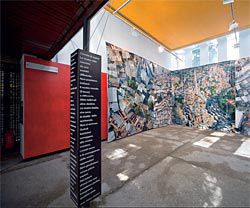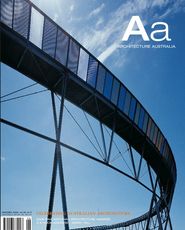CITIES, ARCHITECTURE, SOCIETY
What is the relationship between architecture, the city and the communities who live there? If the many and varied exhibitions that comprise this year’s Venice Architecture Biennale are a guide, “city” and “society” present something of a challenge to some strands of architectural thought. A significant number of the exhibitions seemed to evade the most obvious output of architecture – buildings designed by architects – in favour of documenting the everyday environment of the particular cities, through photography, film and lots and lots of data. The results were interesting, and it is no bad thing for the biennale to think beyond architecture as object, but I was often left wanting more about how architecture as a discipline and a profession might contribute concretely to the issues raised. And what is at stake if the words “city” and “society” result in a partial retreat from architecture itself?
In the publicity material for the event, biennale director Richard Burdett describes the theme as an “attempt to re-engage the physical structures of the city – their buildings, spaces and streets, which is the domain of architects and urban designers – with the social, cultural and economic dimensions of urban existence.” He argues that the architectural profession has “perhaps been overly insulated” from this latter discourse.
He may well right, but a number of the responses to his theme (including, some would argue, his own) shied away from this engagement, turning instead to the apparently endless accumulation of data and to documentation of “ordinary” urban fabric.
But architects are not social geographers, or even video artists. Undoubtedly we have much to learn from other fields, but we might also have something to offer back. For me, some of the most interesting pavilions, Australia among them, engaged with these wider urban discourses, yet did not avoid the fact that many architects make buildings and urban spaces.
The main exhibition, curated by Burdett, presented sixteen “hot spot” cities though beautiful photography and lots of facts and figures, dramatically arranged in the elongated space of the Corderie. The exhibition did include projects in the “hot spots”, but the overwhelming impression was of documentation and data. In her review of the biennale in this issue Maryam Gusheh reflects insightfully on this exhibition and in particular on the stunning, sometimes disconcerting, photographs, drawing links between these exhibition and the interest in the everyday that flourished in the 1960s.
But what of all these numbers? In the 1960s such a plethora of data might have been used to demonstrate progress, but progress is a more fraught proposition these days.
So what is its purpose now? Perhaps it was up to the viewer to produce their own analysis, but, with 47 national exhibitions in addition to the main exhibition, it seems unlikely that even the most committed biennale-goer would have the time or the energy to produce sophisticated interpretations of all that data. And surely that is one important use of data – analysis and interpretation that might suggest ways forward.
The Venezuelan Pavilion took another approach – there were no statistics here, the primary visual component was two large aerial images of the barrios. These were not dissimilar to the images in the main exhibition, but they were presented in a rather more downmarket fashion in the Carlo Scarpa-designed pavilion. In the place of expensive, high-resolution, backlit images, were grainy photographs made up of large banners which, unintentionally perhaps, curved at the edges. These were accompanied by two quotations that presented a firm challenge to the glamour world of international architecture, while still being hopeful about the role that architecture could play in ameliorating grim urban realities. In declining to aestheticize the problems of this particular city, the Venezuelan pavilion seemed provide a much more direct engagement with both the problems and the potential of architecture, city and society.
In its section of the Italian Pavilion, The Berlage Institute critiqued the pervasive emphasis on mapping in contemporary architecture. As they put it in the biennale issue of Hunch magazine, “While our contemporary urbanization is mapped, researched, edited and branded by architects, we overlook how the discipline of architecture, a specific operational field of knowledge, could project the city against its further disintegration.” Perhaps this is the challenge of the Venice Biennale’s 10th International Architecture Exhibition. Full of data, the question it poses is, what can architecture do with that data, what projections might the discipline make? JUSTINE CLARK

The Venezuelan Pavilion at the Venice Architecture Biennale. Photograph John Gollings.
Understand this. Our cities are born from a different society, we cannot imitate them.
Ours (the third world) is different.
It has different roots and another fate.
Your recipes, which are the recipes of entertainment, are useless to us.
Let us mend the errors of our way, and the consequences of your outrage.
Do not judge us without understanding us.
In the future, we may even be able to teach you something. JUAN PEDRO POSANI, VENEZUELAN PAVILION















